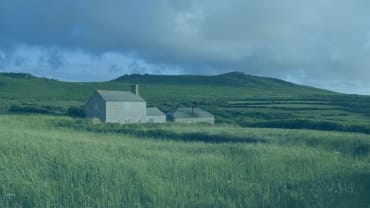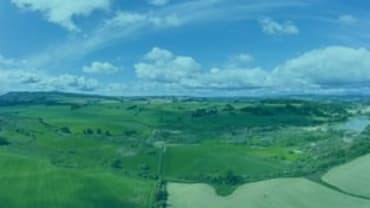Natural capital covers a wide range of naturally occurring resources – for example, soil, water, air - which are deemed to have value. Frequently, it refers to resources that have a capital financial value or can generate an income.
What are the current natural capital opportunities available?
Currently, the two most recognised forms in Scotland are woodlands and peatlands. These have the potential to have a monetary value allocated to them and generate a revenue through the Woodland Carbon Code and the Peatland Carbon Code respectively. The market is developing quickly though and many believe that other forms of natural capital have the potential to generate income or be considered for future financial investment.
What are the benefits of being involved in a natural capital project?
There are environmental benefits and financial benefits. Schemes such as planting woodlands can capture carbon in the atmosphere, while restoring degraded peatlands can stem carbon emissions. Other projects, such as increase of biodiversity, help natural ecosystems to recover and flourish.
In terms of financial benefits, the Woodland and Peatland Carbon Codes allow registered schemes to generate carbon units, which can be sold, traded or used in carbon offsetting to be eligible for government subsidy schemes.
What should I be aware of before signing up?
Fully consider the benefits and potential drawbacks before committing to a natural capital scheme and be sure that the scheme you commit to is right for you and your business. The Woodland and Peatland Carbon Codes tie landowners into potentially long-term maintenance commitments and may restrict the future use of land. There is no guarantee a scheme will be successful and generate the carbon units as intended.
If a landowner sells carbon units at an early stage of a project, leaving the land with long-term commitments and reduced financial benefit, that could have a negative impact on value and saleability. Committing large areas of land to a natural scheme to the exclusion of agricultural or other well-established trading activity could also have tax implications for the business, which should be fully explored.
Any final advice?
- Consider what future use you might like to make of your land and ensure that a natural capital project would not prevent this. For example, a windfarm development is an unlikely possibility on restored peatland, and a native woodland scheme under the Woodland Carbon Code would prevent the same land being used for commercial forestry. Layering of land rights and uses is possible, so that a natural capital scheme does not completely sterilise the future use of your land - but consider all aspects carefully.
- Discuss plans with the people you would like to continue the business after you. Most natural capital schemes require a long-term commitment, which will likely outlive your time in charge of the business; buy-in from the next generation will help avoid problems down the line.
- If you are registering a scheme with the Woodland or Peatland Carbon Codes, it would be worth retaining a significant proportion of the carbon units generated. Agricultural subsidies will become increasingly tied to reduced emissions and there is talk of a carbon land tax for businesses and landowners not making enough progress towards net zero - so you may need those retained units to offset carbon emissions from your own business.
- Finally, seek early advice and before legally committing to anything. Input from all of your trusted professional advisers is best and have them collaborate to fully advise you on what is in the best interests of your business.
Contributor
Partner












